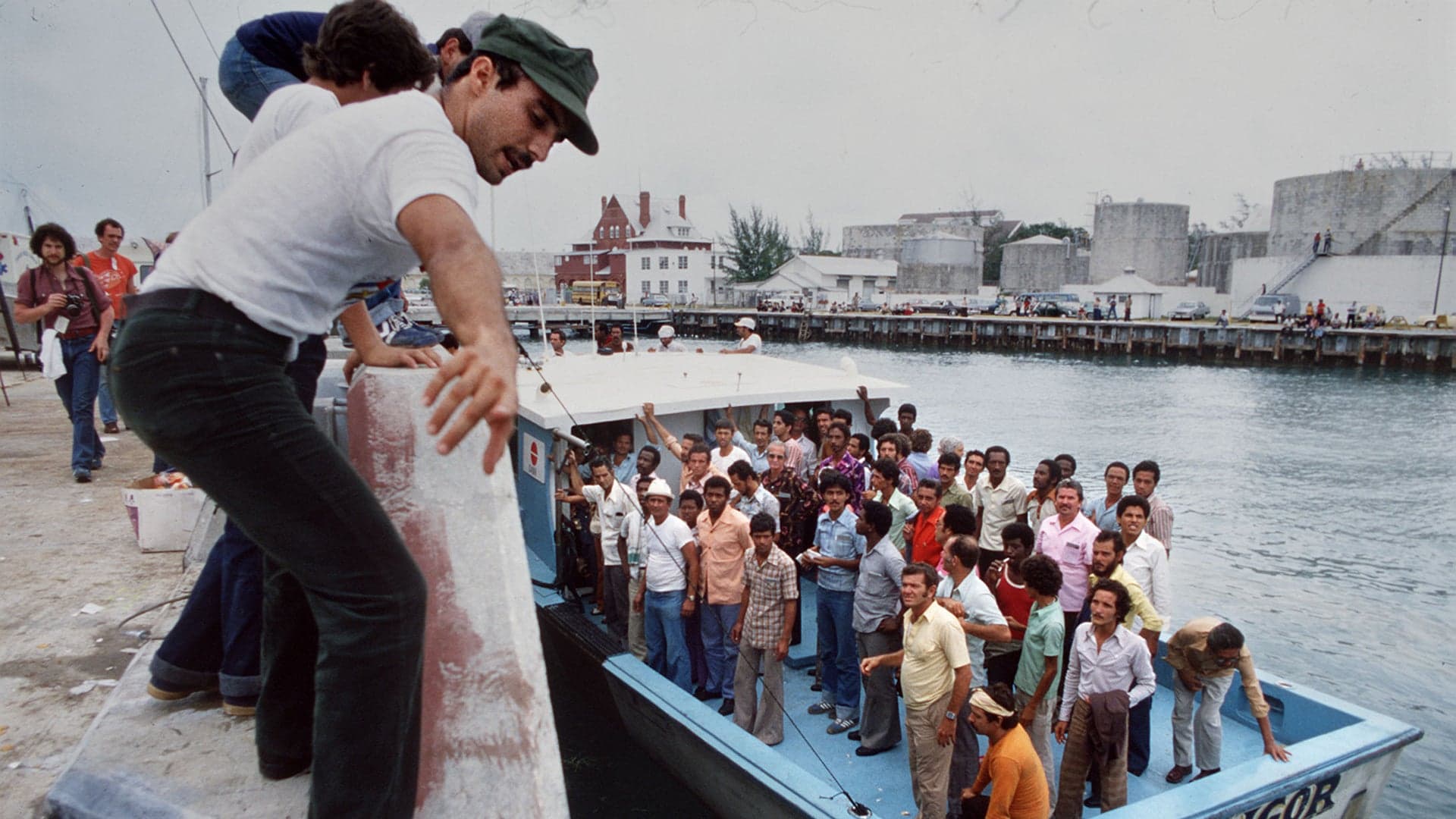On April 20, 1980, the Castro regime announces that all Cubans wishing to emigrate to the U.S. are free to board boats at the port of Mariel west of Havana, launching the Mariel Boatlift. The first of 125,000 Cuban refugees from Mariel reached Florida the next day.
The boatlift was precipitated by housing and job shortages caused by the ailing Cuban economy, leading to simmering internal tensions on the island. On April 1, Hector Sanyustiz and four others drove a bus through a fence at the Peruvian embassy and were granted political asylum. Cuban guards on the street opened fire. One guard was killed in the crossfire.
READ MORE: The Mariel Boatlift: How Cold War Politics Drove Thousands of Cubans to Florida in 1980
The Cuban government demanded the five be returned for trial in the dead guard’s death. But when the Peruvian government refused, Castro withdrew his guards from the embassy on Good Friday, April 4. By Easter Sunday, April 6, some 10,000 Cubans crowded into the lushly landscaped gardens at the embassy requesting asylum. Other embassies, including those of Spain and Costa Rica, agreed to take a small number of people. But suddenly, two weeks later, Castro proclaimed that the port of Mariel would be opened to anyone wishing to leave, as long as they had someone to pick them up. Cuban exiles in the United States rushed to hire boats in Miami and Key West and rescue their relatives.
In all, 125,000 Cubans fled to U.S. shores in about 1,700 boats, creating large waves of people that overwhelmed the U.S. Coast Guard. Cuban guards had packed boat after boat, without considering safety, making some of the overcrowded boats barely seaworthy. Twenty-seven migrants died, including 14 on an overloaded boat that capsized on May 17.
The boatlift also began to have negative political implications for U.S. President Jimmy Carter. When it was discovered that a number of the exiles had been released from Cuban jails and mental health facilities, many were placed in refugee camps while others were held in federal prisons to undergo deportation hearings. Of the 125,000 “Marielitos,” as the refugees came to be known, who landed in Florida, more than 1,700 were jailed and another 587 were detained until they could find sponsors.
The exodus was finally ended by mutual agreement between the U.S. and Cuban governments in October 1980.
READ MORE: The Secret Cold War Program That Airlifted Cuban Kids to the U.S.—Without Their Parents

